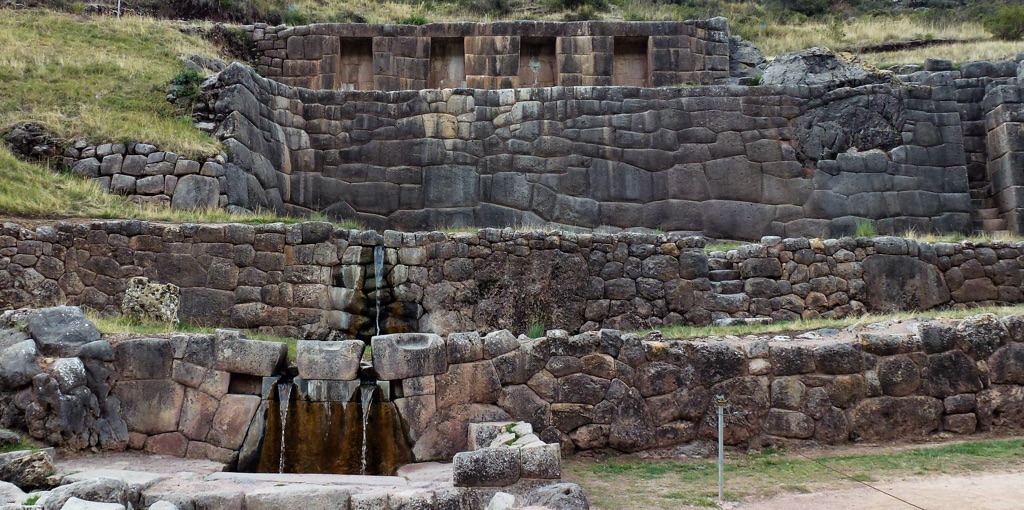Tambomachay is an archaeological site located near Cusco, Peru, often referred to as the “Bath of the Inca” or “El Baño del Inca”. It is known for its intricate water features, with aqueducts, canals, and waterfalls that run through the terraced rocks. The exact purpose of Tambomachay remains a mystery, but it is believed to have been used for ceremonial purposes related to water. The site showcases the Inca’s advanced understanding of hydraulic engineering. It is a testament to their ability to integrate architecture with the natural landscape.
Get your dose of History via Email
Historical Background of Tambomachay
The discovery of Tambomachay isn’t attributed to a single individual, as it has been known to locals for centuries. However, its significance was brought to global attention during the Spanish conquest. The Incas, a civilization that thrived in the Andean region from the 13th to the 16th century, built this site. Although the exact date of construction is unknown, it likely occurred during the peak of the Inca Empire.
There is no clear record of Tambomachay being inhabited after the Incas. The site does not show signs of long-term habitation. Instead, it appears to have been a place of rest and ritual. The Incas held water in high regard, and Tambomachay might have been a site for water worship and related ceremonies.
While not the scene of any known historically significant events, Tambomachay stands as a representation of Inca culture. It reflects their sophisticated stonework and understanding of natural resources. The site is part of the larger network of Inca trails and structures that dot the Cusco region, which was the heart of the Inca Empire.
The builders of Tambomachay remain as much a mystery as the site itself. The Incas did not leave written records, and much of what is known comes from archaeological evidence and Spanish chronicles. The Incas’ engineering skills are evident in the precision of the stonework and the functionality of the water features.
Although Tambomachay has not been the center of any major historical events post-Inca times, it has become an important cultural heritage site. It attracts tourists and scholars alike, who come to marvel at the ingenuity of its creators. The site continues to be a focus of archaeological study and conservation efforts.
About Tambomachay
Tambomachay is a complex of ruins featuring a series of aqueducts, channels, and multiple waterfalls that cascade through the terraced rock. The site is relatively small compared to other Inca ruins but stands out for its waterworks. The Incas constructed Tambomachay using finely cut polygonal stones, fitting them together without mortar in their signature architectural style.
The main highlight of Tambomachay is its two-tiered structure with water flowing through precisely carved channels. These channels direct water to a series of ceremonial baths. The quality of the stonework suggests that the site held significant importance. The Incas often reserved their finest masonry for the most sacred or important structures.
The source of the water is a spring that originates higher up the mountain. The Incas harnessed this natural resource, creating a sustainable water supply that has lasted for centuries. The exact methods used to construct these water features remain a topic of admiration and speculation among historians and engineers.
Architecturally, Tambomachay is a showcase of the Inca’s ability to blend their constructions with the natural landscape. The site integrates with the surrounding environment, enhancing its aesthetic and functional aspects. The Incas’ reverence for nature is evident in the way Tambomachay harmonizes with its surroundings.
The building materials used at Tambomachay were local stones, expertly carved and placed. The Incas were known for their ability to transport large stones across difficult terrain. They used a combination of human labor and ingenuity to create their monumental works, including the features found at Tambomachay.
Theories and Interpretations
Several theories exist about the purpose of Tambomachay. Most agree that it was a site with a strong ceremonial element, possibly dedicated to the worship of water. Water was a sacred element for the Incas, and Tambomachay’s elaborate water features support this theory.
Some scholars suggest that Tambomachay was a spa for the Inca elite. Its nickname, “Bath of the Inca,” implies a place of relaxation and purification. The presence of baths and the site’s tranquil setting lend credence to this interpretation.
There are mysteries surrounding Tambomachay, particularly regarding the engineering techniques used to create its water features. The precision and sustainability of the water flow have led to speculation about the knowledge possessed by the Inca engineers. How they achieved such accuracy remains a topic of study.
Historical records are scarce, so much of what is known about Tambomachay comes from archaeological interpretation. The site’s features have been matched to other Inca sites with known purposes, helping to build a picture of its possible use. However, without definitive records, these remain educated guesses.
Dating Tambomachay has been challenging due to the lack of organic materials that can be carbon-dated. Instead, researchers have used relative dating methods, comparing it to other known Inca sites. The style of stonework and the site’s relation to other Inca structures have helped to estimate its age.
At a glance
- Country: Peru
- Civilization: Inca
- Age: Estimates suggest construction occurred during the height of the Inca Empire, around the 15th century AD

